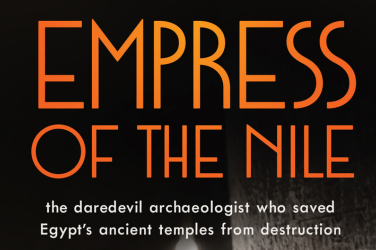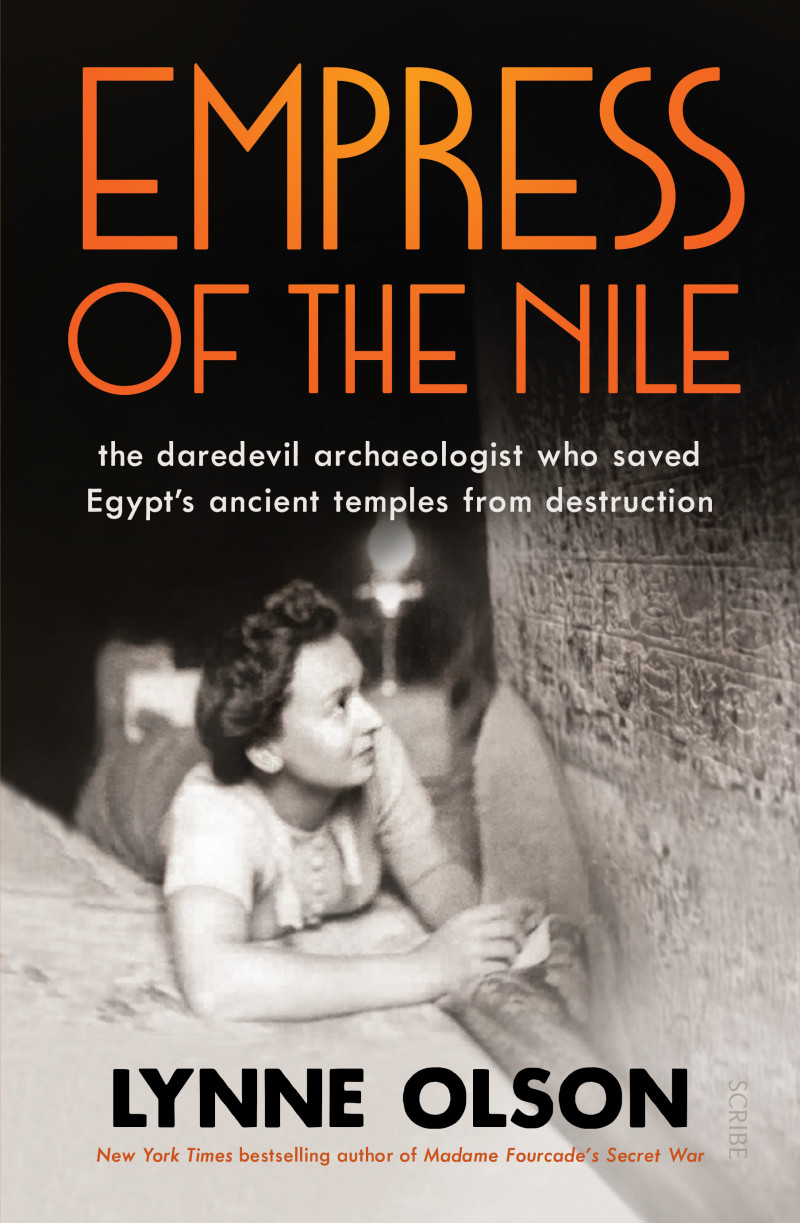
- Free Article: No
- Contents Category: Biography
- Review Article: Yes
- Article Title: La grande nubiade
- Article Subtitle: A padded and hyperbolic biography
- Online Only: No
- Custom Highlight Text:
In the 1960s, as Egypt built the second Aswan Dam, the monuments of ancient Nubia, including the colossi at Abu Simbel, risked vanishing beneath a lake. Backed by UNESCO, an international coalition of archaeologists, celebrities, politicians, and engineers succeeded in moving them. Whole temples were cut off their rock bases and lifted with hydraulics, or removed in segments from cliff-faces and sinking islands, for reassembly on higher ground. The struggles involved, American author Lynne Olson’s book Empress of the Nile makes clear, were fiendish. The engineering problems were considered impractical, the politics foolhardy. For the sake of flood regulation and hydroelectricity, ancient buildings seemed an acceptable loss. Rousing the political will to save them took scholarship, conviction, charm, and sheer nerve. In short, it took French Egyptologist Christiane Desroches-Noblecourt.
- Featured Image (400px * 250px):

- Alt Tag (Featured Image): Theodore Ell reviews 'Empress of the Nile: The daredevil archaeologist who saved Egypt’s ancient temples from destruction' by Lynne Olson
- Book 1 Title: Empress of the Nile
- Book 1 Subtitle: The daredevil archaeologist who saved Egypt’s ancient temples from destruction
- Book 1 Biblio: Scribe, $36.99 pb, 448 pp
- Book 1 Cover Small (400 x 600):

- Book 1 Cover (800 x 1200):

Desroches-Noblecourt was used to personal crusades. A female pioneer in a field obsessed with male status, she defied gross sexism all her life. In an early indignity, she was moved to a poor spot on a dig at Edfu to make way for a male student. Even after Nubia, male colleagues played down her instrumental activism. Desroches-Noblecourt rose above fury by believing in intellectual attainment as a supreme moral good, to which her formidable gifts led her by merit. She could overplay that hand. Once, she promised French government support for the Nubian campaign, without authority. Yet she could look an enraged Charles de Gaulle in the face and equate the campaign to the civilisational ideals that had liberated France from the Nazis. De Gaulle was disarmed and arranged funds. Paradoxically for someone who blazed such a progressive trail, Desroches-Noblecourt baulked at calling herself a feminist. The greatest compliment she ever received was being called a humanist.
Empress of the Nile offers many such remarkable facts and stories, but it is an exasperating read. For a book that prizes historical detail, there are glaring errors. Olson has Caesar Augustus conquering Egypt, but he was known as Octavian then and took the ‘Augustus’ sobriquet later. Carrara, the home of the masons who disassembled Abu Simbel, is not in the Italian Alps but in Tuscany. And it is imprecise to name ‘ancient Egyptian and Greek’ as the languages on the Rosetta Stone; Olson omits that these two tongues were written in three scripts, which is what makes the Stone so vital for translation.
More seriously, Empress of the Nile is structurally unsound. Olson’s historical sections are rambling tangents that obscure Desroches-Noblecourt’s story. The politics of the Suez Crisis are recited over fourteen pages, but it takes less than one for Desroches-Noblecourt’s conservation work to ‘morph into a massive international effort’. Desroches-Noblecourt is absent for several chapters while Olson concentrates on Jacqueline Kennedy, another vital Nubian campaigner, but of whose efforts Desroches-Noblecourt was unaware for decades. The most ludicrous detour is a love triangle involving Jean-Paul Sartre, Simone de Beauvoir, and UNESCO official René Maheu, of which Olson remarks that if Desroches-Noblecourt knew of Maheu’s ‘colourful private life’ she never mentioned it.
As a history of the race to save the Nubian monuments, of the boom of interest in Egyptology, and of the politics of owning and borrowing antiquities, Empress of the Nile would work better; as the personal story of Desroches-Noblecourt, with history more sharply narrated, better still. Trying to be both, the book loses focus and overcompensates with exaggeration, I suspect because of commercial pressure. That Desroches-Noblecourt ‘owned her power’ there is no doubt, but to claim she was ‘a real-life female version of Indiana Jones’ is cheap. It was her intellect and eloquence that won arguments. She knew that moral commitment would get Egypt’s heritage nowhere unless someone did the political slog of causing attitudes to act on interests. Amplifying a belief among educated citizens that heritage was a matter of responsibility as well as enjoyment, she persuaded a powerful few that it was in their interests to be seen preserving it. We today face an even greater struggle to save heritage, and life, from a warming climate and rising seas. Desroches-Noblecourt shows us ways of inducing action as well as inspiring it.
Empress of the Nile deserves credit for summarising Desroches-Noblecourt’s career in English and for its descriptions of the Nubian campaign. Olson is a superb scene-setter and narrator of action. I share her astonishment that no biography of Desroches-Noblecourt existed previously, in French or English. That said, Desroches-Noblecourt’s own memoir, La grande nubiade (1992), was popular in France and supplies much of Olson’s material. The question arises, might it have been more effective to translate La grande nubiade into English – Olson would be the ideal translator – and accompany it with a pithier historical essay, marrying Desroches-Noblecourt’s own story with Olson’s abilities in research and scene-setting? Desroches-Noblecourt’s was a great life and there are the foundations of a great book about it here, but they are buried in padding and hype.


Comments powered by CComment